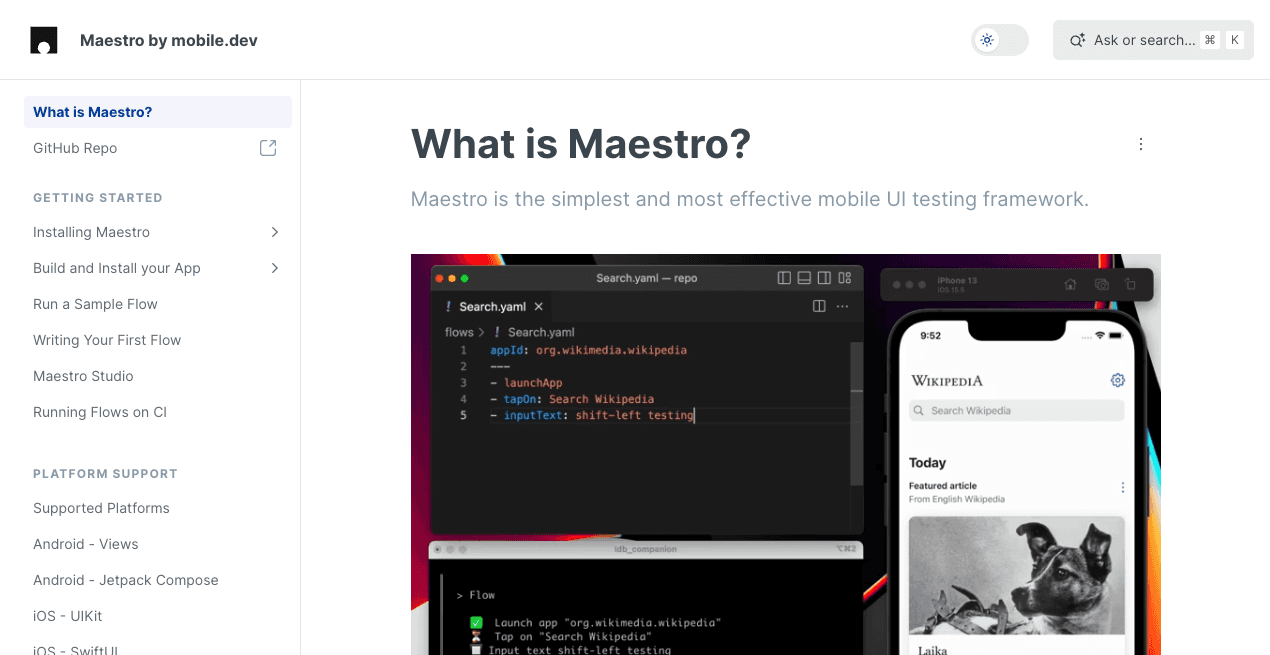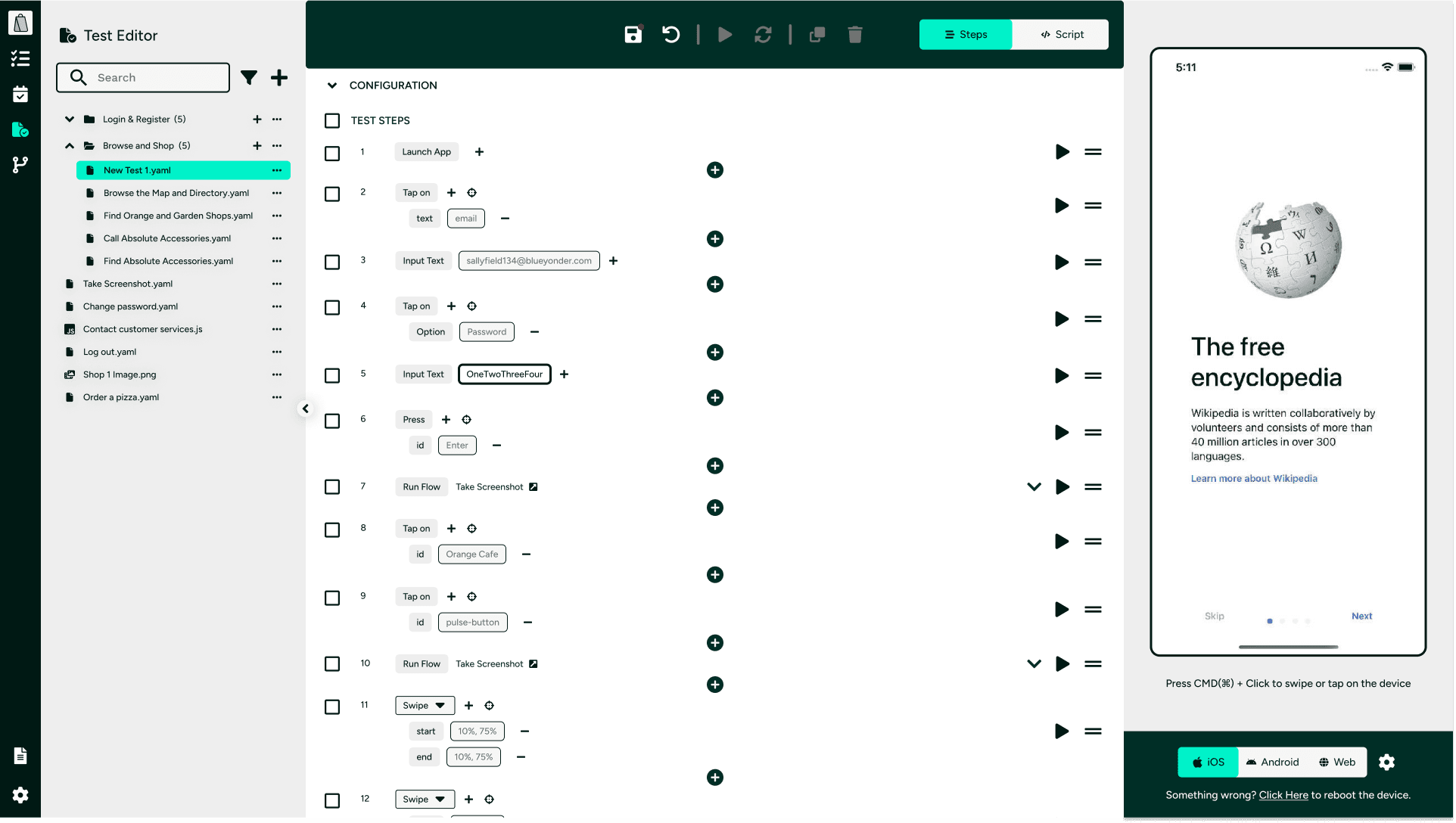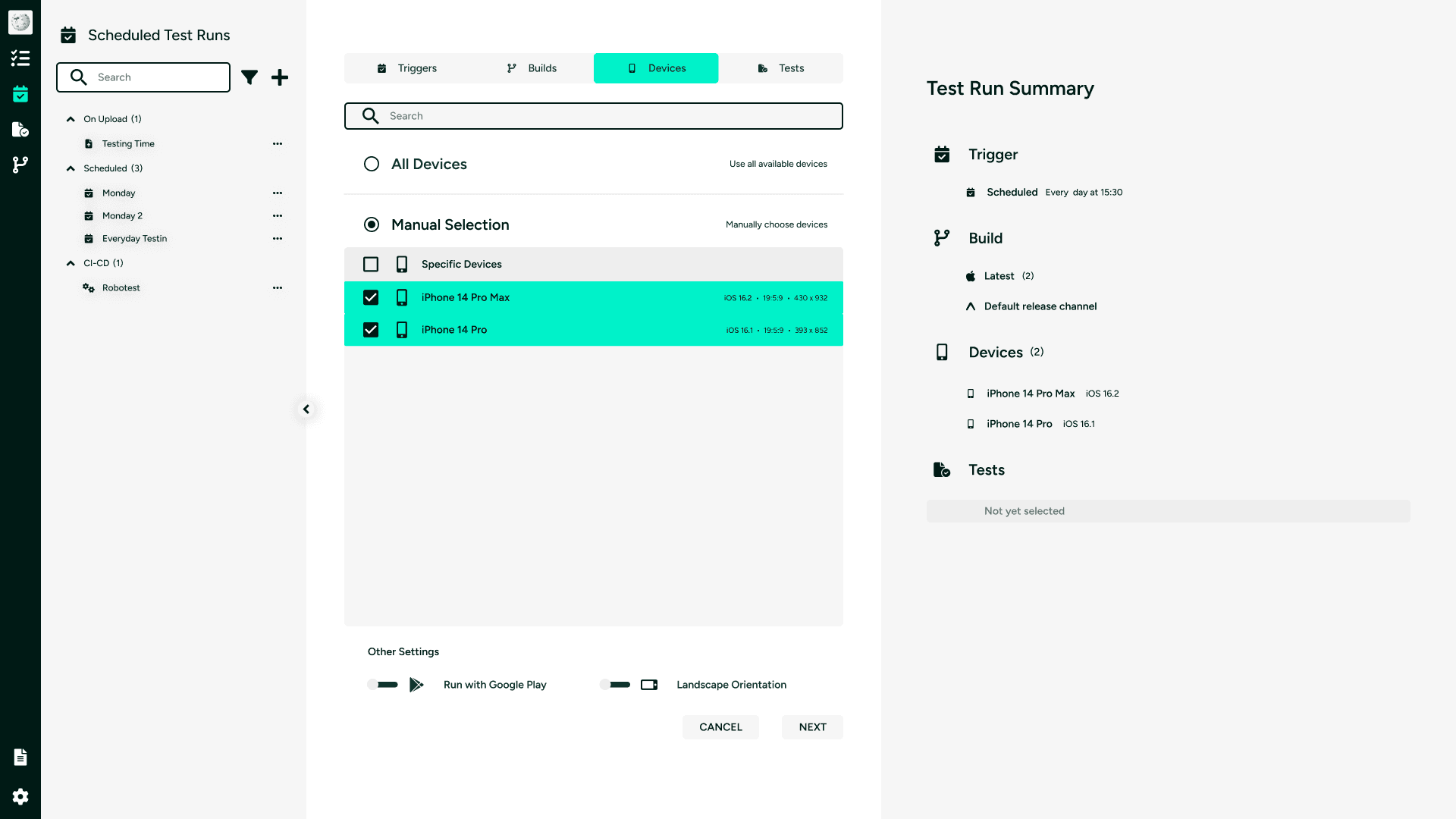Maestro vs Moropo: app testing tool detailed comparison
Nov 29, 2023

Both Maestro and Moropo have powerful app testing features that will meet the needs of most QA teams. Yet their difference in usability, advanced functions and integrations make them better suited for different audiences.
We've compared the tools in five dimensions, which are crucial for app testing software:
Easy of use
Reliability
Advanced features
Integrations
Pricing
Here's how they measure up: Maestro vs Moropo
Comparison Summary: Maestro vs Moropo
Moropo and Maestro are both excellent tools for testing mobile apps. Maestro is best suited for senior engineering teams with MacBooks, whereas teams with non-developers should opt for Moropo.
Moropo particularly excels at ease of use as all you need is a browser.
What is Maestro?
"Maestro is the simplest and most effective mobile UI testing framework."

Launched in 2022 by Mobile.dev, Maestro is a mobile UI automation framework. It comes bundled with two services: Maestro Studio and Maestro Cloud. Studio is a test creation tool that works with local iOS/Android emulators. Cloud is a test execution service for running Maestro tests using managed infrastructure. It's made for developers, with command-line interface tooling and a technical focus.
What is Moropo?
"Test more of your app in 10x less time"

Moropo was founded in 2022 to simplify test automation for mobile app creators. The platform is entirely online (with no local download) and includes three main features: a low-code Test Creator, Test Runner and Issue Explorer. Moropo is best for multi-functional teams collaborating on testing without needing complex local setups.
Moropo vs Maestro: Ease of use
All features of Moropo can be used directly from the browser by non-technical team members, while Maestro requires a more complicated command-line installation process.
Moropo and Maestro both support test creation
Both Maestro and Moropo offer low-code drag-and-drop test creators - with the possibility to edit the underlying YAML directly. Although both editors are similar, Moropo is slightly more full-featured, with several "quality of life" improvements.
Unlike Maestro, Moropo will:
Autocomplete and validate each command in the test;
Let you play an individual step without needing to select it;
Switch between Android and iOS without needing to re-launch.

Maestro is more complex to set up
Maestro uses your local Android Emulators and iOS Simulators. That means it must be installed onto your laptop via the command line. This process is OK for an experienced software engineer, but when we asked our non-coding Project Manager to install Maestro, he got stuck and needed an engineer to help. All told Maestro took over an hour to get working.
Maestro Studio depends on Android Studio (4.4 GB) for emulators and XCode (11.7 GB) for iOS Simulators. If you don't have a Mac, you won't be able to test iOS. Additionally, if you want to test against more devices and phone versions, you'll need to add them. In our tests, the total install size for a decent device setup was over 60 GB.
Moropo, on the other hand, is entirely browser-based. This means no installation is required or dependency on XCode or Android Studio. A non-technical user can build their first test on Moropo in minutes.
Moropo has more test execution options
Moropo and Maestro both let you "re-play" your tests in the UI. This works well for validating that your tests run correctly. After which, you'll want to execute tests in a central cloud environment and trigger those runs automatically from a CI or schedule.
Maestro Cloud lets engineers trigger cloud test runs via the command line or GitHub Action. The API - and the service - is straightforward. You can run tests on a basic Android Emulator or iPhone 11 Simulator. Both virtual devices offer an array of operating system versions which can be specified via command line flags.
By comparison, Moropo offers a much more full-featured test execution service. This includes dozens of Android and iOS devices and a UI to trigger tests (see below) from CI, calendar or build upload. Moropo also has a GitHub Action and command-line triggers.
Maestro Cloud is great for simplicity, but if you're not an engineer and you want to run tests on iPads, tablets or by calendar schedule, then this is much easier to do with Moropo.

It's easier to compare results in Moropo
When it comes to viewing the outputs of your test runs, both platforms offer some core features, including video playback and a log viewer.
There are some key differences, though. In Maestro Cloud, a test run is for a single device only. In Moropo, you can configure multiple devices in the same test run. This makes it much easier to compare results across different devices and operating systems. Moropo also offers a baseline comparison tool to see screenshot differences between this test run and the previous test run.

Winner: Moropo
While Maestro should be applauded for its simplicity, Moropo outshines it when it comes to ease of use. With a broader range of features available on the UI and no need for complex local setup, Moropo is perfect for less technical team members and non-Mac users.
Moropo vs Maestro: Reliability
Maestro and Moropo are both reliable systems compared with traditional mobile automation, but Maestro users do experience some flakiness and cloud cancellation issues.
Emulator reliability
Both Maestro and Moropo use virtual Android and iOS devices for test creation and execution. If you've worked with virtual devices, you'll know they can be unreliable, especially for longer sessions or lower-spec laptops. Both products deal with this problem in different ways.
As Maestro uses local test creation, emulator reliability becomes your problem during this phase of the testing workflow. Emulator crashing? You'll need to fix it or restart it. This can add many minutes to your workflow and give you another technical job to do.
Things get a little better once you've moved to test execution, as Maestro Cloud provides managed emulators. However, there are common reports in the Maestro Slack of flows being cancelled without reason.
With Moropo, the virtual devices are provided and managed for you in a dedicated and optimised cloud environment - which your laptop likely isn't! Emulator crashing? Press "re-launch", and you'll be provided a clean device in 30 seconds.
Test flakiness
It must be said that both Maestro and Moropo are incredibly resistant to test flakiness. This is largely thanks to intelligent delay systems, which wait for elements to finish rendering before they are interacted with.
That being said, there is a glaring issue with building tests on local emulators: they differ from Maestro Clould emulators. There are many factors which affect the running of a test—these range from resource allocation (e.g. RAM) to dependency factors (e.g. SDK versions).
These differences stack up, and some Maestro users find their tests run correctly locally, but when they push them up to Maestro Cloud, they fail.
Moropo protects against this with a straightforward feature: the cloud devices used for test creation are precisely the same as the ones used for test execution. This gives Moropo users much higher confidence in their tests and lets them quickly validate their test flows directly in the test creator.
Winner: Moropo
Although both platforms are very reliable, Moropo edges ahead by managing the test creation emulators on your behalf. The fact that test creation and execution occur in the same cloud environment has a significant impact on flakiness reduction.
Moropo vs Maestro: Advanced Features
Overall, Moropo has a much broader range of advanced features, which increases test coverage. However, both platforms are feature-lite compared to more mature tools like Waldo.
Maestro doesn't include email functionality
Many apps have user flows which include email access, such as password reset links or 2FA codes. In Maestro, it's very tricky to test these as there is no standard way to expose email during a cloud test run. Moropo provides a way to access emails out-of-the-box, which makes it easy to test these flows without needing to bypass or mock functionality.
Moropo supports iPads and tablets
Maestro Cloud only provides two devices, and they are both phones. OK, for a quick smoke test, but it is less useful if you have a variety of user devices to support. Moropo offers a much bigger array of viewport sizes and form factors with support for iPads, Android Tablets and various phones.
Maestro has AI functionality
Mobile.dev is investing in a range of AI features. The first is having GPT suggest the next step during flow creation. For example, it might offer "tap on text submit" or "swipe up". This is pretty neat, but it does take a while to load, even for simple suggestions.
Winner: Moropo
Although Maestro's AI functionality is interesting, Moropo's support for tablets and emails is far more helpful in everyday testing.
Moropo vs Maestro: Integrations
For React Native users, Moropo offers more relevant integrations, but Maestro has a broader range, especially for CI.
CI connectivity
Moropo offers native integrations for GitHub with a dedicated Action that allows the triggering of tests and the upload of builds. Maestro provides the same but with additional integrations for BitBucket, Bitrise and CircleCI. Both platforms enable generic integration using CLI or webhook tools.
Additionally, Moropo has some additional support for React Native Expo users. This includes pulling binary builds directly from EAS servers and first-class support for Expo Updates via the GitHub Action.
Team comms
Both platforms offer a Slack bot for test notifications. Maestro Cloud also has email notifications. Moropo lets you invite and manage team members directly on the platform.
Winner: Maestro (but Moropo for Expo users)
Unless you're using Expo, Maestro edges ahead with broader native integrations into CI platforms. That being said, Moropo's generic webhooks will work on any CI system.
Moropo vs Maestro: Pricing
Maestro usage-based pricing model will suit small teams and freelancers. Moropo's unlimited test runs model works our better value for larger teams.
Getting Started Pricing
Maestro's usage-based pricing model starts at $0.10 per test run. This is great for getting started and experimenting with the platform. You also get $10 free credit per month. Moropo offers a free trial and plans from $290 per parallel run per month.
Scaling up
Once you start to run more tests, Maestro costs can increase rapidly. It can tempting to minimise the number of tests you run, but that's not ideal if QA is critical to your workflow - which it should be. It's also tricky to predict cost as test run numbers typically vary from month to month.
Moropo's pricing includes unlimited test runs and device minutes, which makes it very affordable to scale up testing coverage. For teams that require faster results, it's easy to add more parallel runs.
Winner: Moropo
Both platforms are reasonably priced, but Moropo offers better value to teams undertaking serious testing.
Moropo vs Maestro: Pros & Cons
Final Verdict: Moropo vs Maestro
As you may have realised by now, Maestro and Moropo are similar platforms focused on solving similar problems. But there's a fundamental difference in technical complexity, which makes them suited for different user groups.
Use Maestro if:
You are a freelancer or developer that's comfortable on the command line
You have existing Bitrise or BitBucket infrastructure that you need to integrate tightly
Use Moropo if:
You are likely to run lots of tests
You have a multi-disciplinary team that needs to collaborate
Your app is used on tablets and iPads
Not everyone in your team has a MacBook
Explore and compare the pros and cons of Moropo and Maestro across pricing, ease of use and reliability.
